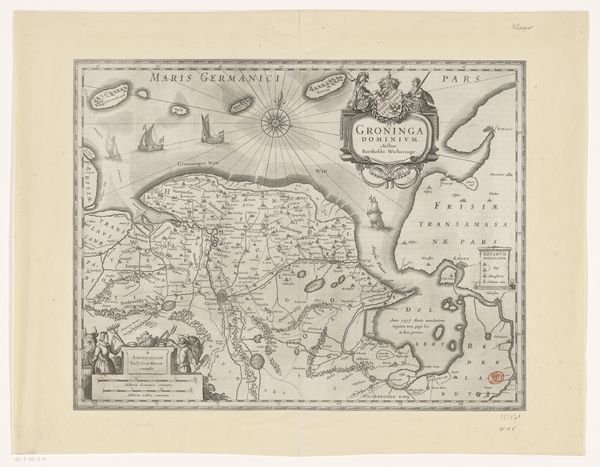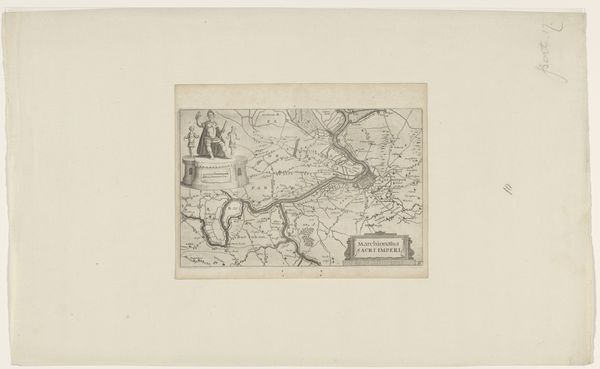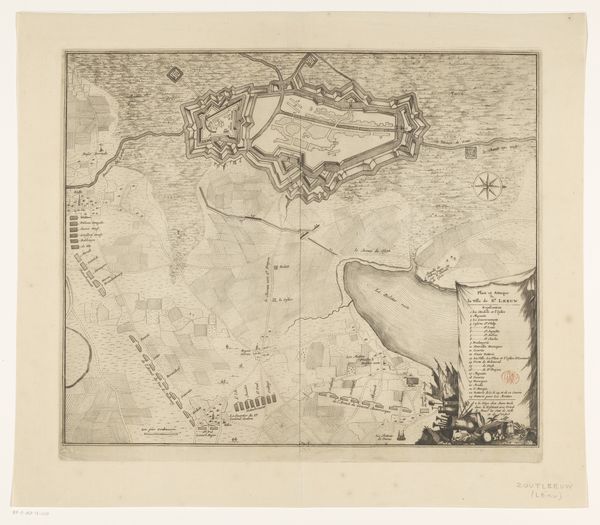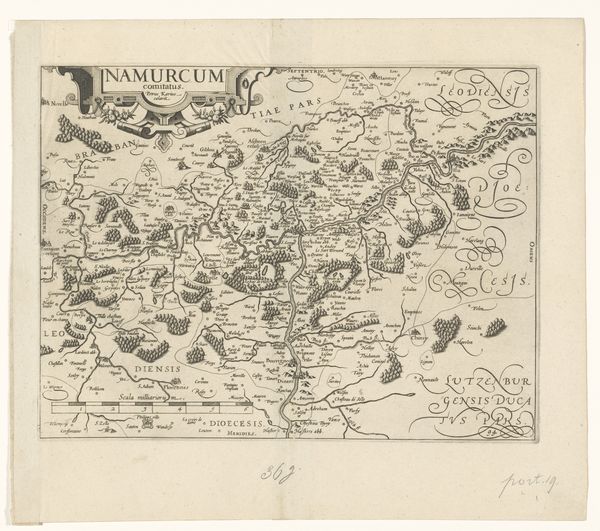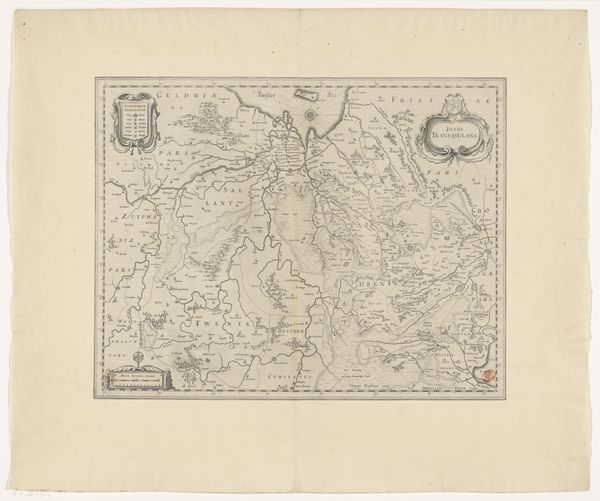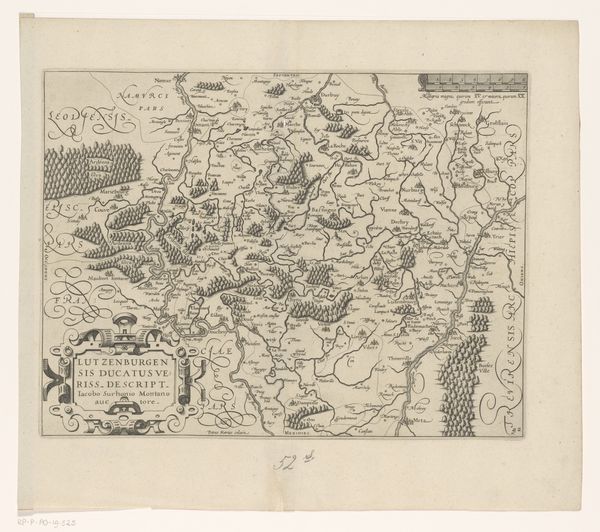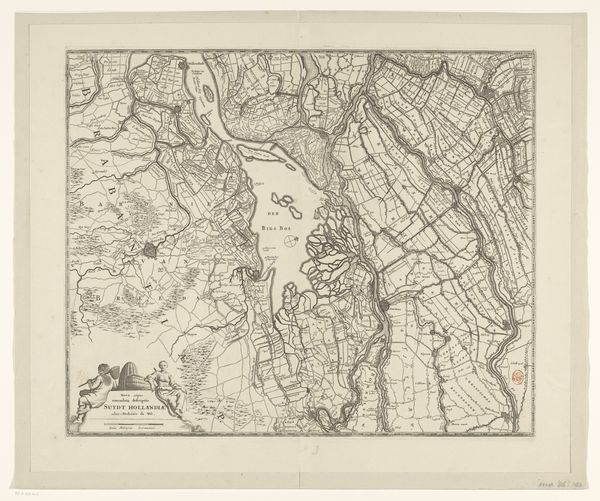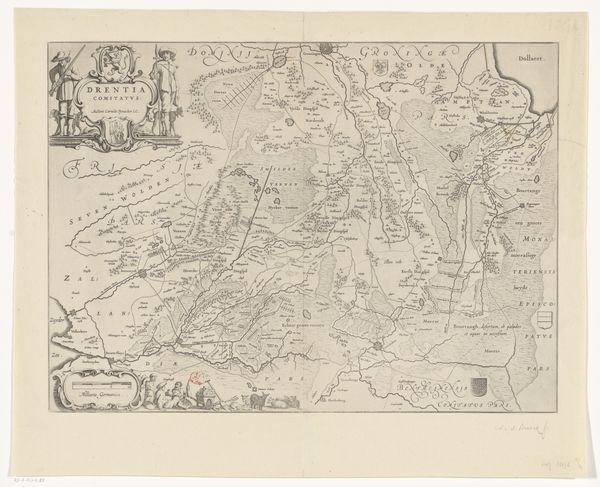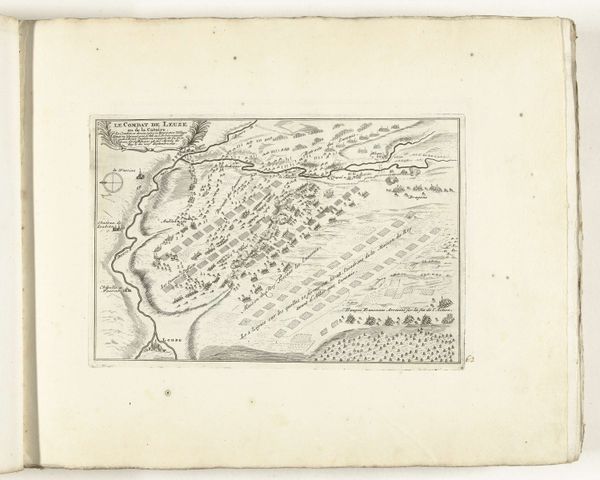
graphic-art, print, engraving
#
graphic-art
#
dutch-golden-age
#
ink paper printed
# print
#
landscape
#
cityscape
#
engraving
Dimensions: height 404 mm, width 537 mm
Copyright: Rijks Museum: Open Domain
Curator: Here we have "The Siege of Grol by Frederik Hendrik, 1627," created by Claes Jansz. Visscher. It's an engraving, meticulously rendered in ink on paper. My first impression is that it conveys a sense of intense control, almost sterile in its precision. Editor: Indeed. I see it as a stark reminder of the realities of 17th-century power dynamics in the Netherlands. Grol, now Groenlo, was under siege—a battleground in the Eighty Years' War, part of the Dutch struggle for independence from Spain. Visscher's map isn't just a document; it's a depiction of oppression, an attempt to exert territorial control through strategic visual representation. Curator: Consider the composition. Visscher utilizes a bird's-eye view, a deliberate choice to survey and map the entire siege. Notice the sharp, clean lines delineating fortifications and troop placements; he constructs a rational, almost mathematical rendering of conflict. The various elements are contained neatly. Editor: But that supposed "rationality" only serves a particular agenda. The map glorifies military prowess while simultaneously minimizing the human cost of war. Who does it serve? The victors, obviously. What about the lived experiences of the people of Grol? Or the soldiers forced into this conflict? Curator: Semiotically, these fortified shapes are not neutral; each symbol possesses a definite militaristic purpose, directing viewers toward an understanding of power. Visscher uses signs—literally lines and strategically placed forms—to direct how the scene must be understood. Editor: Absolutely. And those signs are loaded with ideological meaning. A key question emerges: Who gets to produce these representations, and whose voices are being suppressed? Consider that women, working-class people, and those deemed "enemies" would likely not have their stories memorialized or given significance in accounts like this. This is visual propaganda that excludes many narratives and histories. Curator: I recognize that historical conditions bear directly upon its creation and reception, and further contribute meaning. However, I remain absorbed with the pure design of this composition, it seems expertly calibrated to me. Editor: I agree, the rendering shows artistry; I am less inclined to view it merely as an aesthetic or formal statement independent of its history. Visscher gives us this plan; the rest of us can attempt to decode his decisions through both artistic and ethical terms. Curator: By studying his graphic approach to space, we appreciate a certain style that is quite characteristic of its period. Editor: Indeed, its legacy remains culturally complex. Let us proceed to the next artwork, then.
Comments
No comments
Be the first to comment and join the conversation on the ultimate creative platform.





